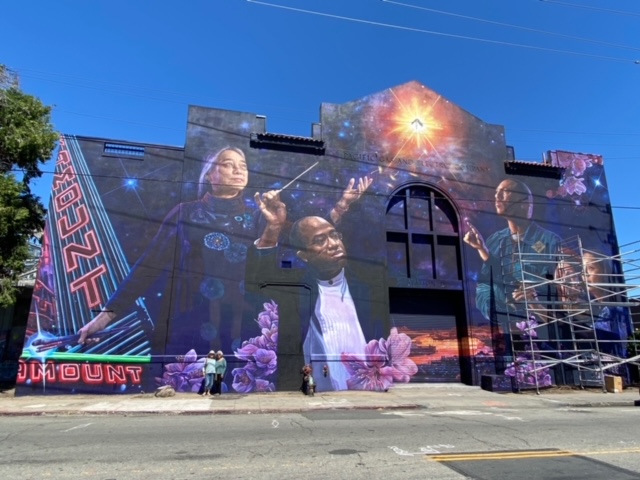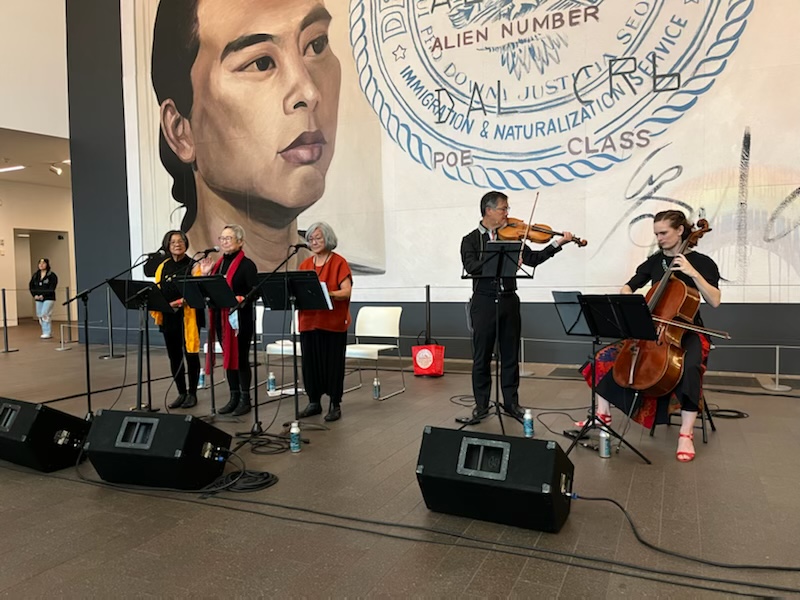American Born / Resident Alien is a poetry performance by The Last Hoisan Poets — Nellie Wong, Flo Oy Wong, and Genny Lim — exploring themes of migration, sisterhood, and spiritual transcendence.
July 2, 2022, 1:00 pm – 2:00 pm, Wilsey Court, de Young Museum
Held in conversation with Hung Liu: Golden Gate (金門), this program is inspired by personal and ancestral connections with Hung Liu’s life and art. The performance also features music by violist Charlton Lee and cellist Kathryn Bates of the Del Sol Quartet.
This event was held in the de Young’s Wilsey Court, a space free to the public.
https://deyoung.famsf.org/calendar/last-hoisan-poets-pay-tribute-artist-hung-liu
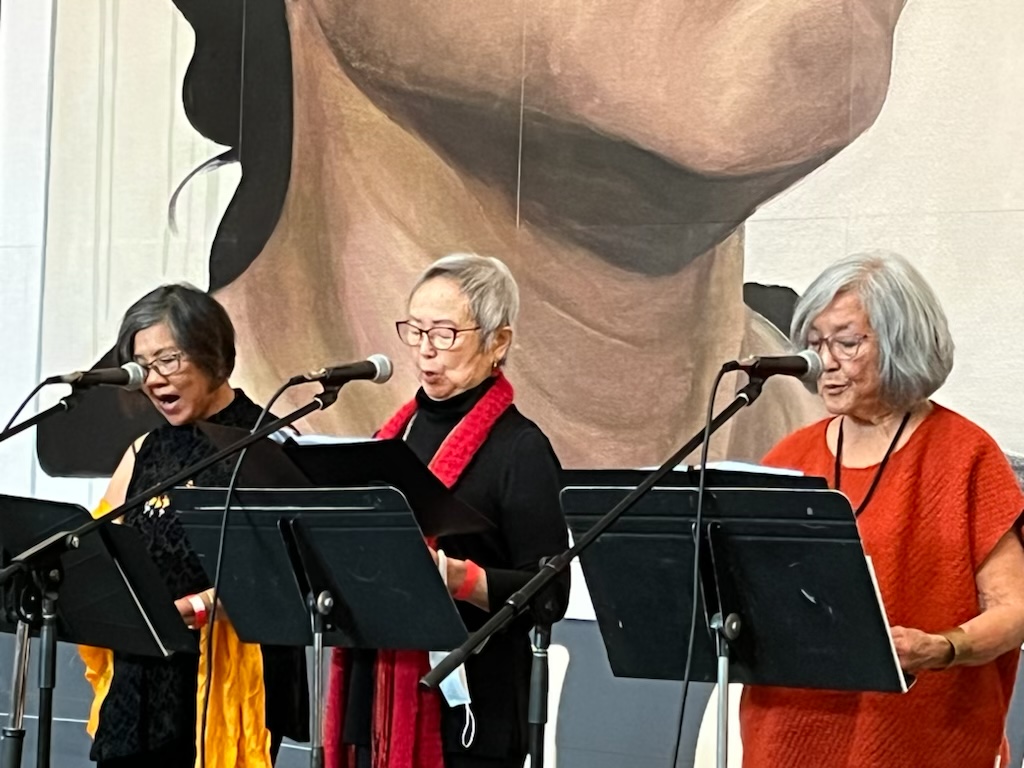
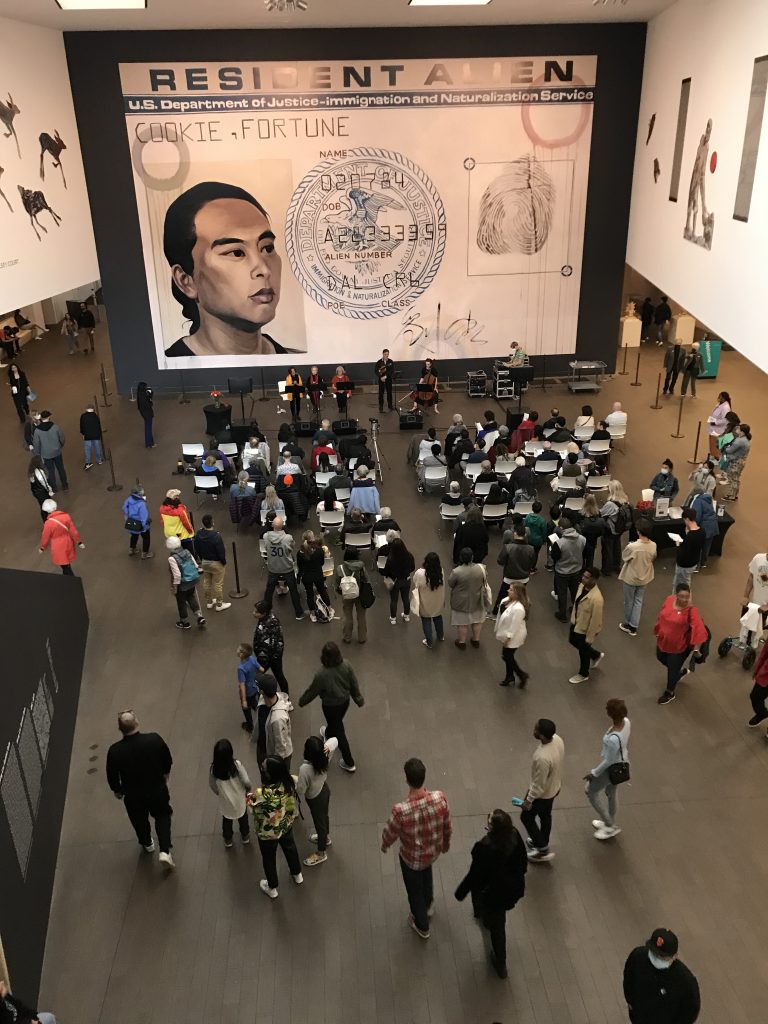
The program began with a Land Acknowledgment recognizing that Indigenous communities have lived in and moved through this land over hundreds of generations and Indigenous peoples from many nations make their home in this region today.
Hung Liu was born in Changchun, China in 1948, growing up under the Maoist regime. Initially trained in the Socialist Realist style, Liu studied mural painting as a graduate student at the Central Academy of Fine Art in Beijing, before immigrating to the US in 1984.
She once said, “The story of America as a destination for the homeless and hungry of the world is not only a myth. It is a story of desperation, of sadness, of uncertainty, of leaving your home. It is also a story of determination, and—more than anything—of hope.”
The Last Hoisan Poets: A Tribute to Hung Liu “American Born / Resident Alien”
Jasmine Flower by Jiangsu, arr. Zhou; played by Charlton Lee (viola) & Kathryn Bates (cello)
The Diamond Sutra by Genny Lim
Embers, composed by Charlton Lee
Pantoum for the Woman Who Left Cloud Village by Nellie Wong; with musical improvisation by Charlton Lee & Kathryn Bates
They are the Rays of Her Sun / Tamen Shi Tai Yang de Guangmang by Flo Oy Wong, featuring a light/leit motif composed by Charlton Lee
Phrase, composed by Kui Dong
Sister Hoods (For Hung Liu) by Nellie Wong
Dei Moy: Sisterhood is in the Heart by The Last Hoisan Poets, accompanied by Charlton & Kathryn playing music drawn from Jungyoon Wie’s Calm and Huang Ruo’s A Dust in Time
My True Name (For Hung Liu) by Genny Lim
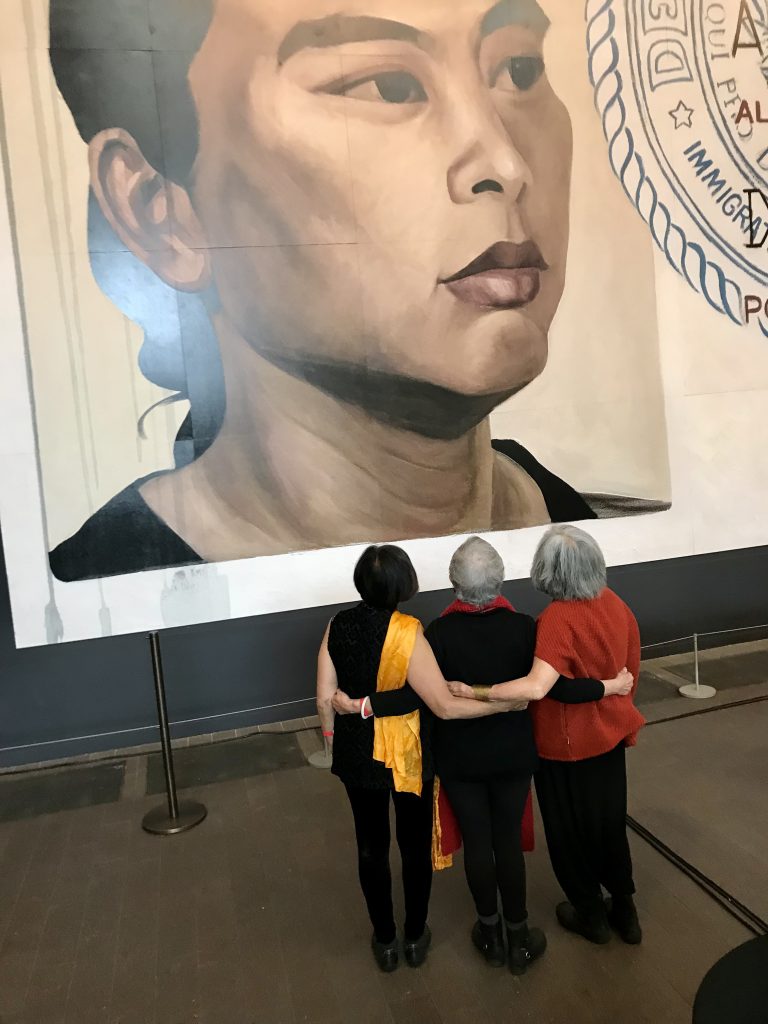
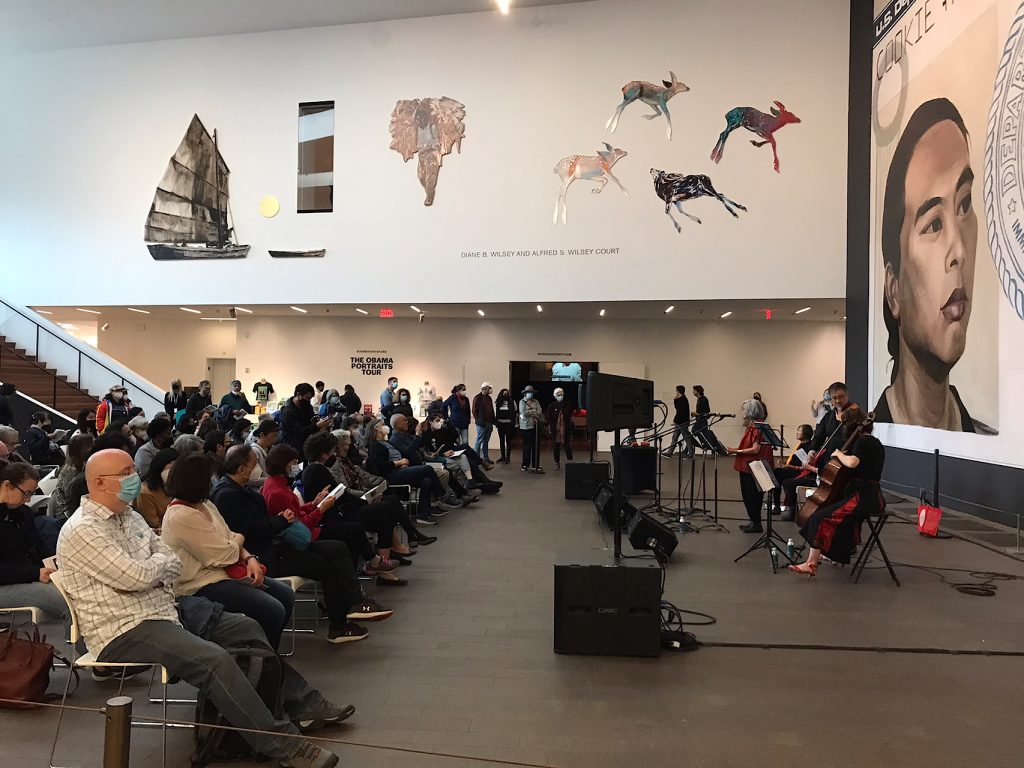
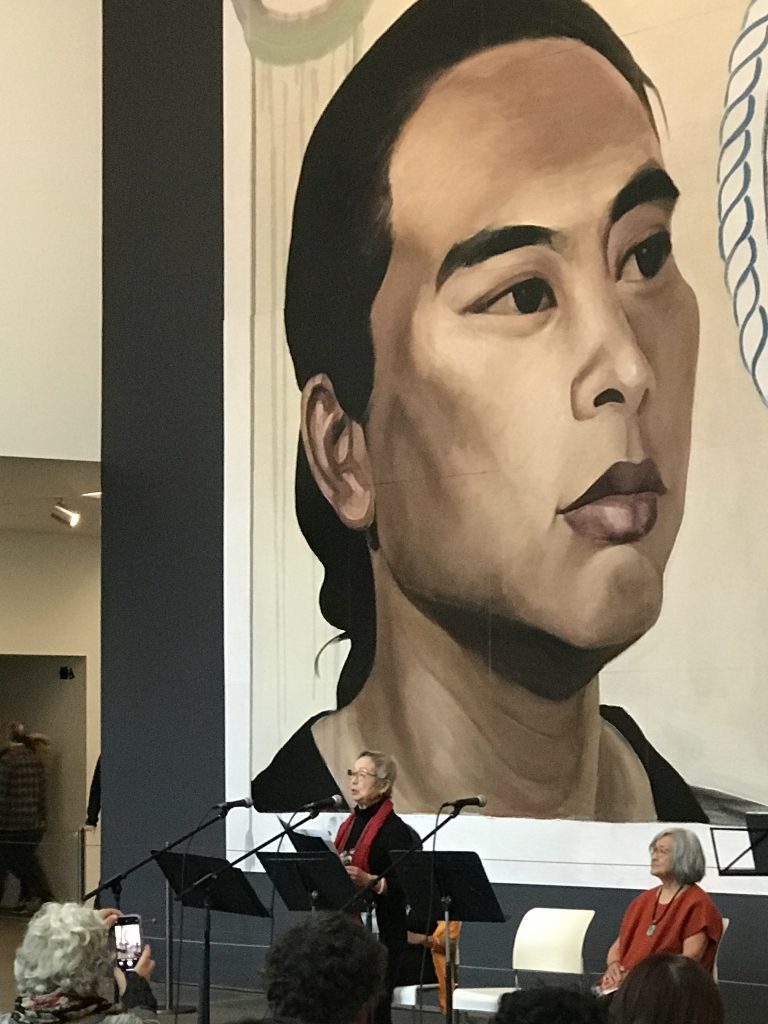
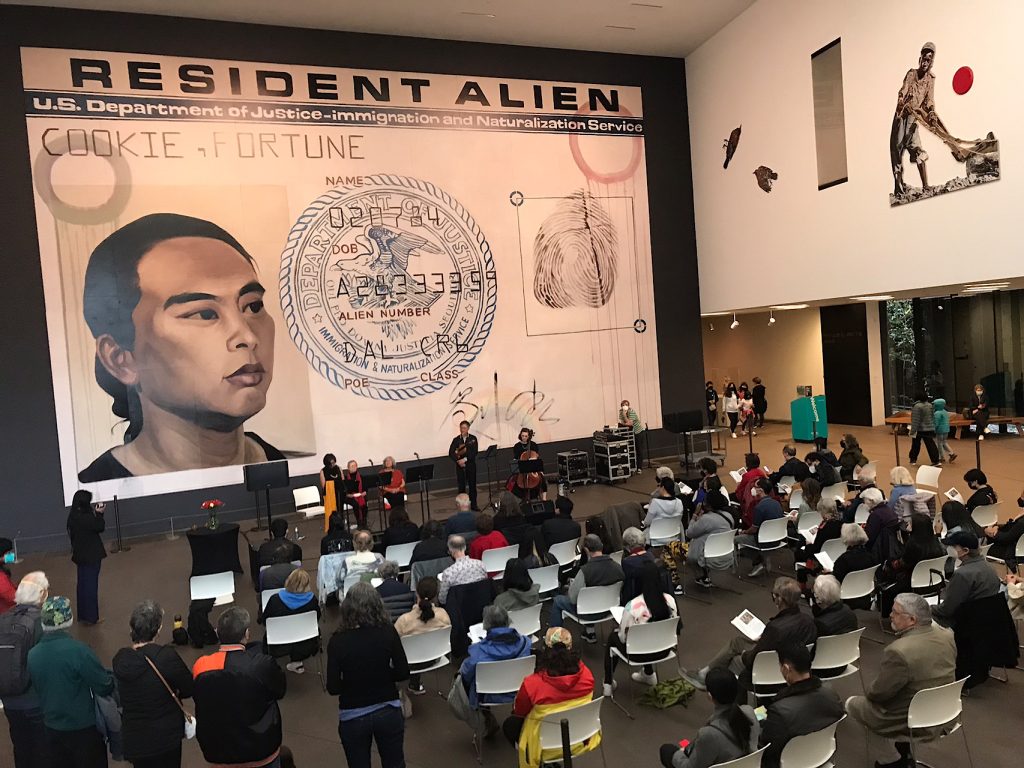
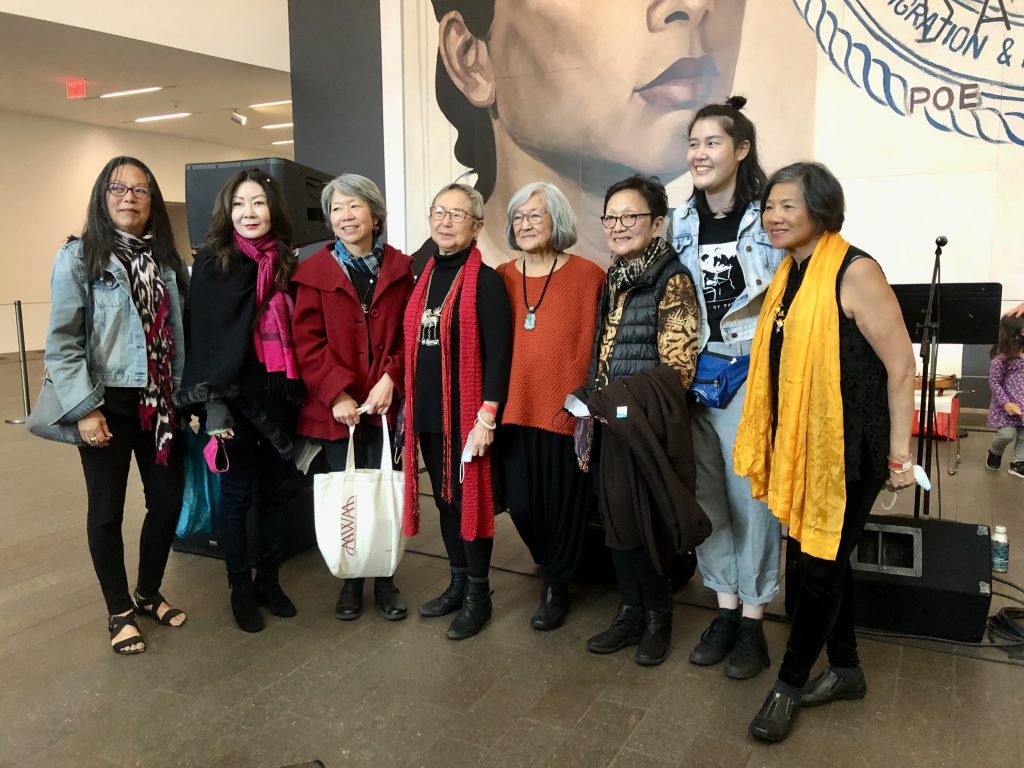
Na Omi Judy Shintani, Kathy Fujii-Oka, Shari Arai DeBoer, Flo Oy Wong, Nellie Wong,
Ellen Bepp, Diana Li, and Genny Lim. Photo by Serena Lee.
Our thanks to the amazing and supportive staff at the de Young Museum and the Fine Arts Museum of San Francisco for this special opportunity to pay tribute to Hung Liu. https://www.famsf.org
Thank you to Diana Li & Shari deBoer, Indra Mungal for their assistance with the hoong bao ritual, and our gratitude to Melanie Elvena and all of the members of the Asian American Women Artist Association (AAWAA), whose mission is to advance the visibility and recognition of Asian American women in the arts. Through exhibitions, publications, public programs and an informative website, AAWAA is an accessible resource and portal for educators academics, researchers, arts and social justice communities and the general public. https://www.aawaa.net
Most importantly, The Last Hoisan Poets would like to express our deepest gratitude to Jeff Kelley, Hung Liu’s devoted husband, for coming to take part in our special tribute. For more information about Hung Liu’s life and art, please visit: http://www.hungliu.com
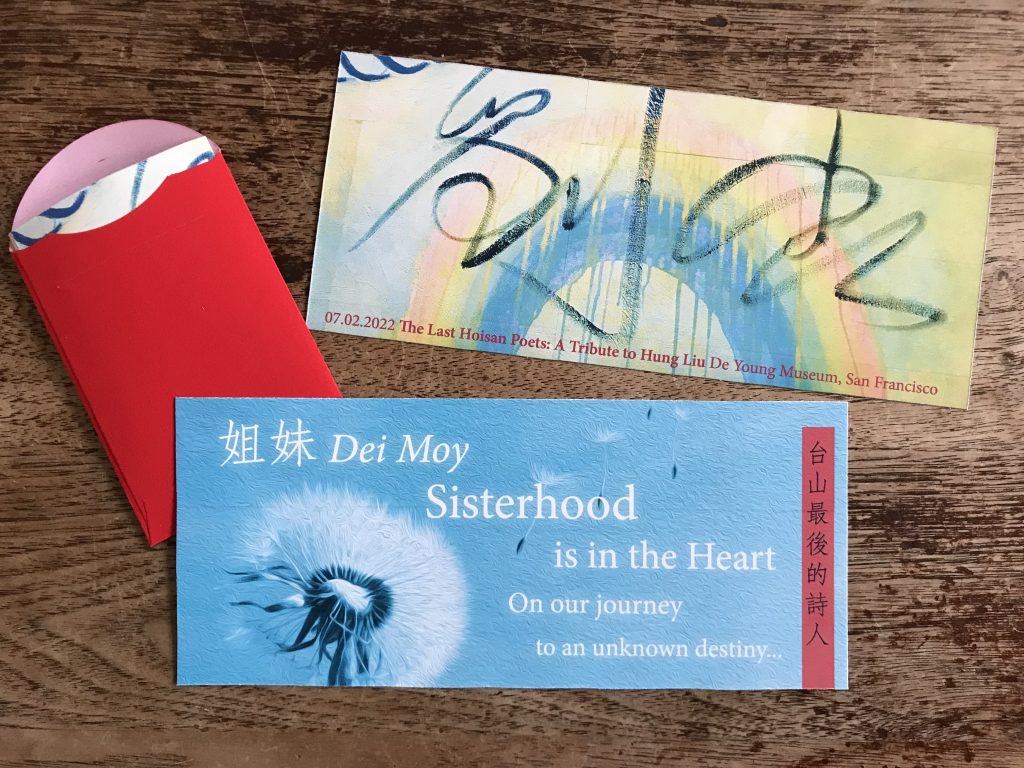
“Five-thousand-year-old history on my back, twenty-first-century culture in my face. Crossing the bridge takes your whole life.” –Hung Liu
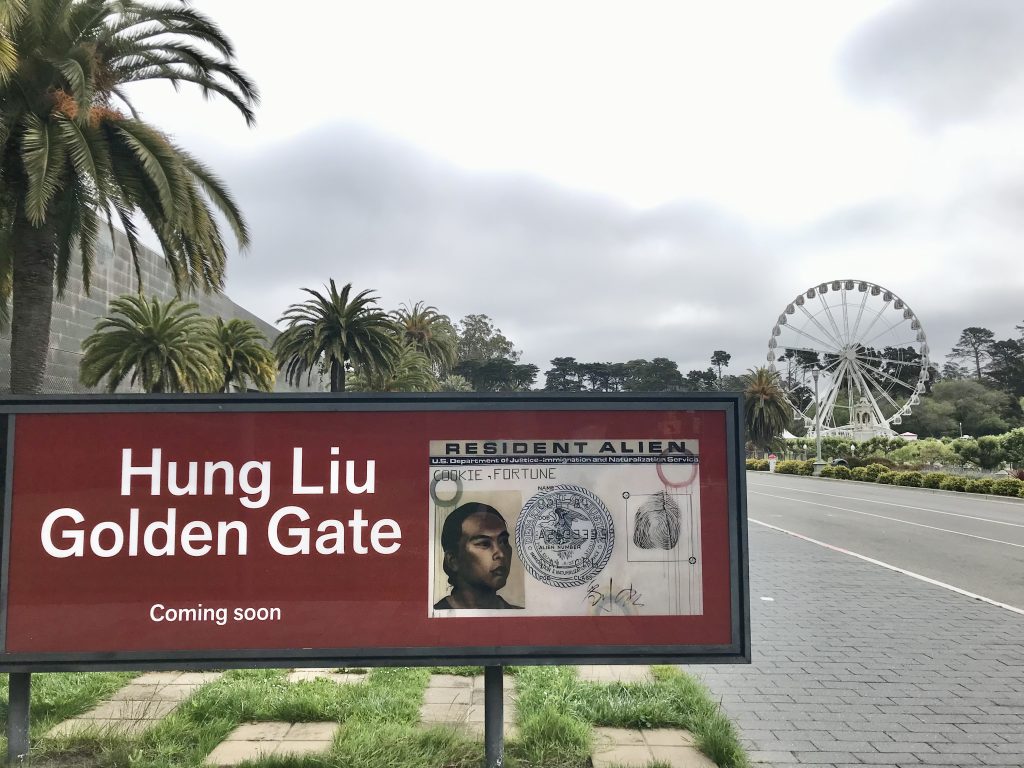
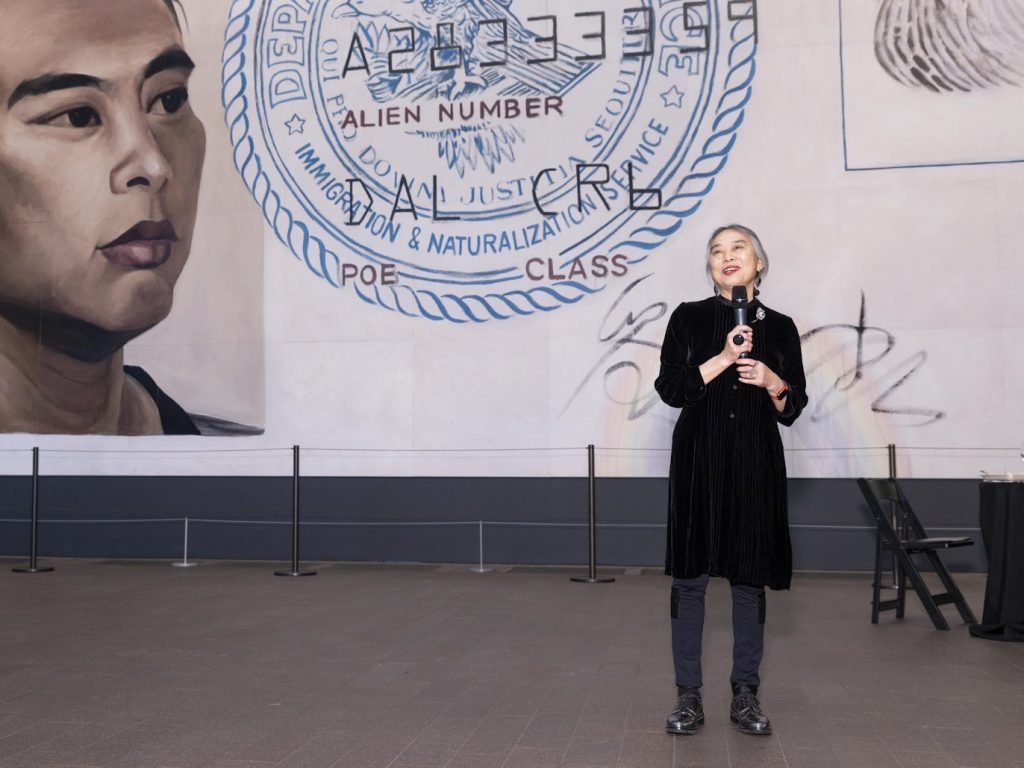
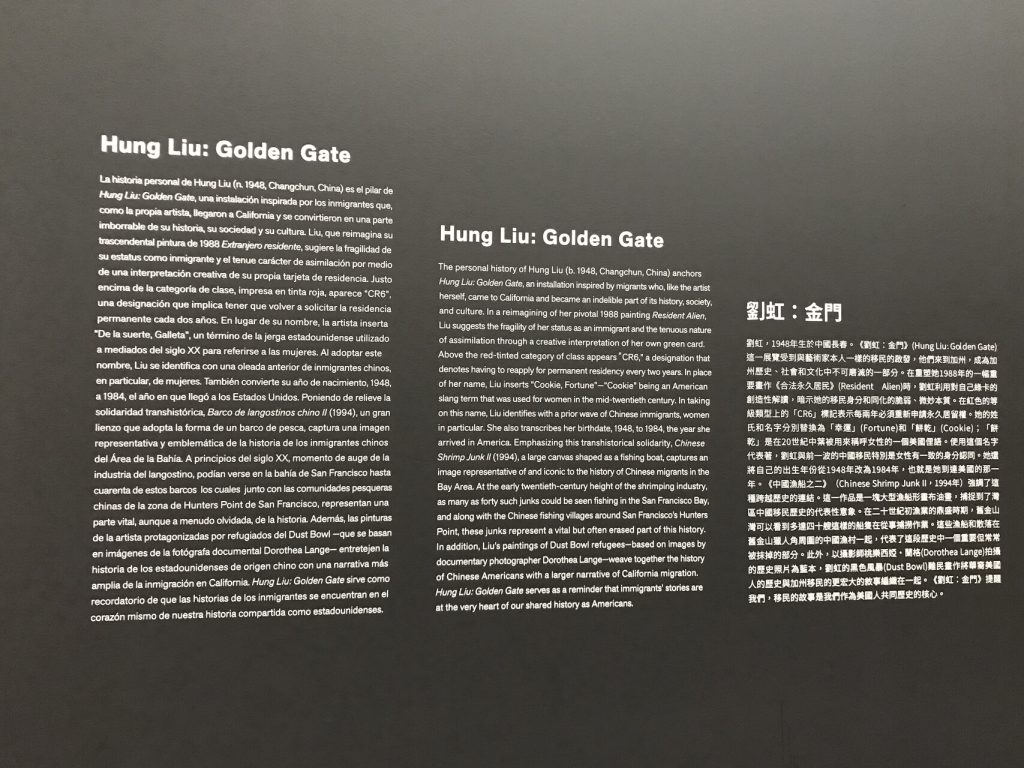
The personal history of Hung Liu (b. 1948, Changchun, China) anchors Hung Liu: Golden Gate, an installation inspired by migrants who, like the artist herself, came to California and became an indelible part of its history, society, and culture. In a reimagining of her pivotal 1988 painting Resident Alien, Liu suggests the fragility of her status as an immigrant and the tenuous nature of assimilation through a creative interpretation of her own green card. Above the red-tinted category of class appears “CR6,” a designation that denotes having to reapply for permanent residency every two years. In place of her name, Liu inserts “Cookie, Fortune”—“Cookie” being an American slang term that was used for women in the mid-twentieth century. In taking on this name, Liu identifies with a prior wave of Chinese immigrants, women in particular. She also transcribes her birthdate, 1948, to 1984, the year she arrived in America. Emphasizing this transhistorical solidarity, Chinese Shrimp Junk II (1994), a large canvas shaped as a fishing boat, captures an image representative of and iconic to the history of Chinese migrants in the Bay Area. At the early twentieth-century height of the shrimping industry, as many as forty such junks could be seen fishing in the San Francisco Bay, and along with the Chinese fishing villages around San Francisco’s Hunters Point, these junks represent a vital but often erased part of this history. In addition, Liu’s paintings of Dust Bowl refugees—based on images by documentary photographer Dorothea Lange—weave together the history of Chinese Americans with a larger narrative of California migration. Hung Liu: Golden Gate serves as a reminder that immigrants’ stories are at the very heart of our shared history as Americans.
— Hung Liu: Golden Gate at the de Young; lens.famsf.org/labels/liu
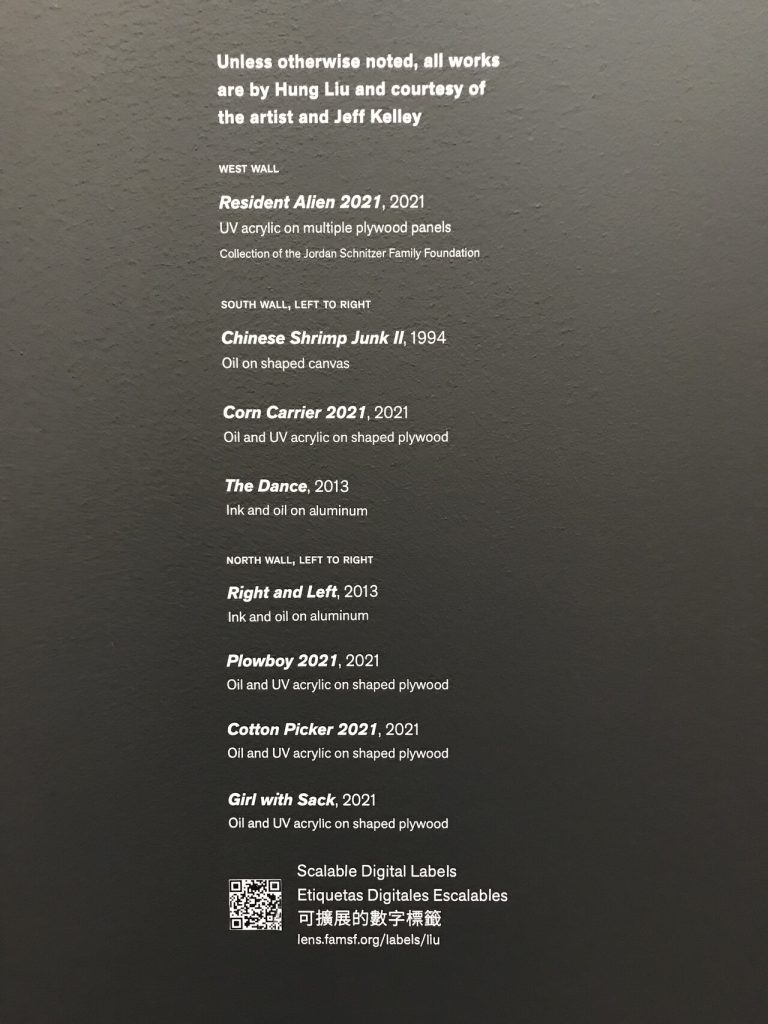
Scalable digital labels for Hung Liu: Golden Gate can be viewed in multiple languages — English, Spanish and Chinese online at lens.famsf.org/labels/liu
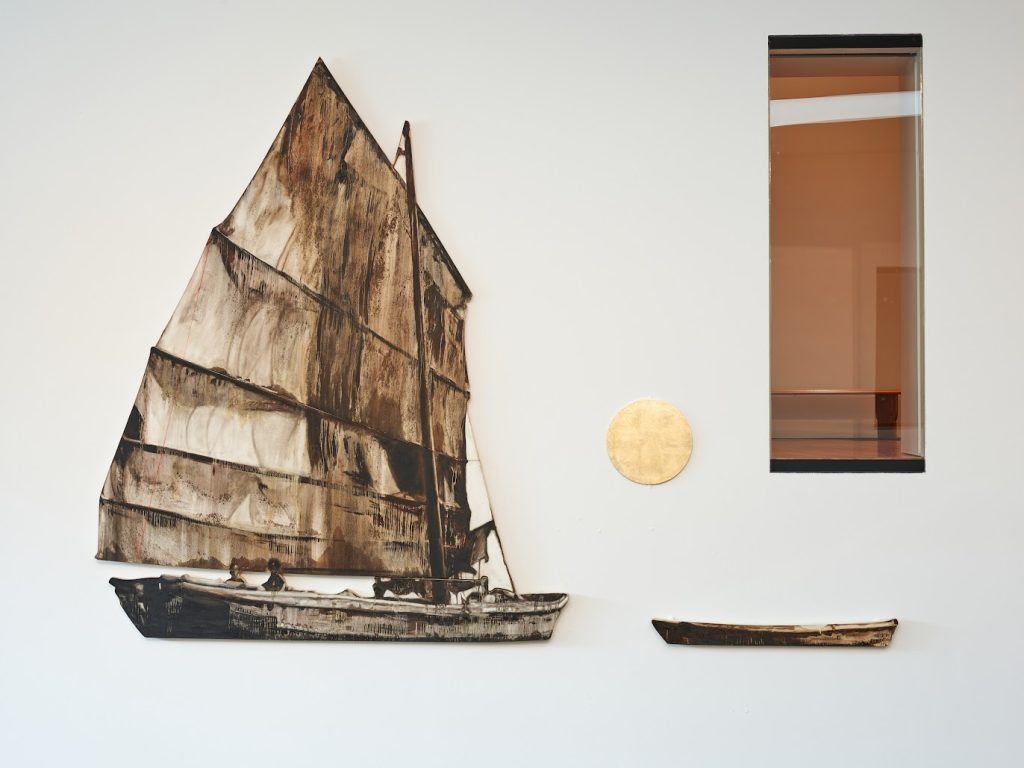
Hung Liu: Golden Gate (金門), de Young, San Francisco, 2021. Artwork: © Hung Liu.
Photograph by Jorge Bachmann, © Fine Arts Museums of San Francisco
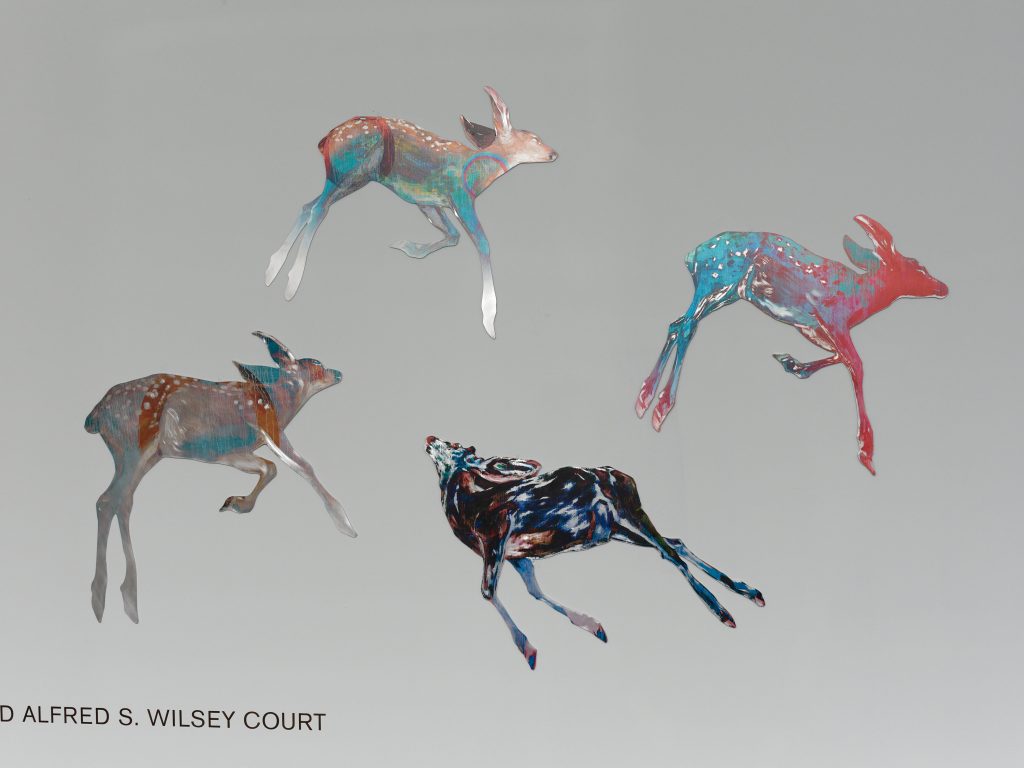
Hung Liu’s art will inspire and endure through time, because of its universality and humanism.
Her subjects, from the Dancing Deer and personal renderings of ancient calligraphy, inspired by her immersion in the Buddhist cave murals of Dunhuang of the Gobi Desert as a young, graduate student and her journeys to sacred shrines and sites throughout China, were foundational in her spiritual approach to art.
Liu’s Portraits of Promised Lands elevate salt of the earth, common people, such as peasants, migrant laborers, orphaned children, refugees, prostitutes and outcasts and their struggles for survival in the face of poverty and often, political displacement and oppression, to heroic levels, as if to open our viewing eyes to see afresh, who these people really are for the very first time.
Liu’s brush was guided by her words, “I want my work to be a comfort to people I’ve never known.” It is this, this quality of empathy that exudes in each of her canvases, each stroke of her brush and each subject, whether animal, object or human, which makes her work transcendent.
As the wall or canvas is a form of empty space, painting as a means of transforming the world of suffering and pain into one of beauty and joy, exemplifies the Buddhist path of transformation and healing.
— An Introduction to Hung Liu by GENNY LIM, June 4, 2022.
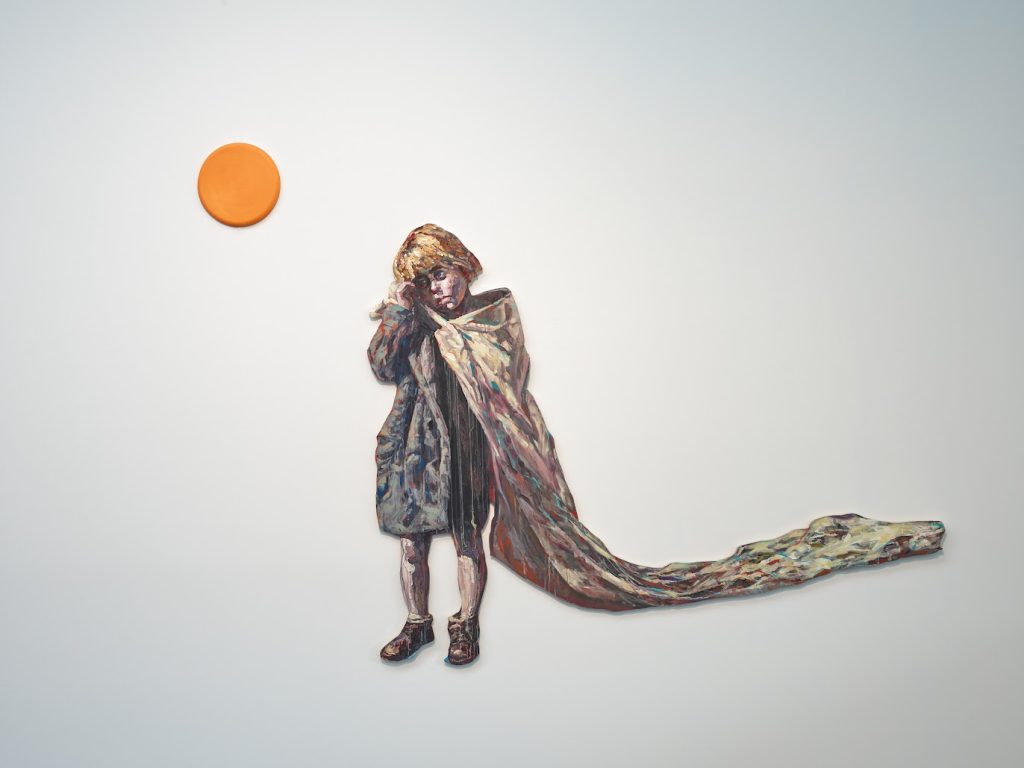
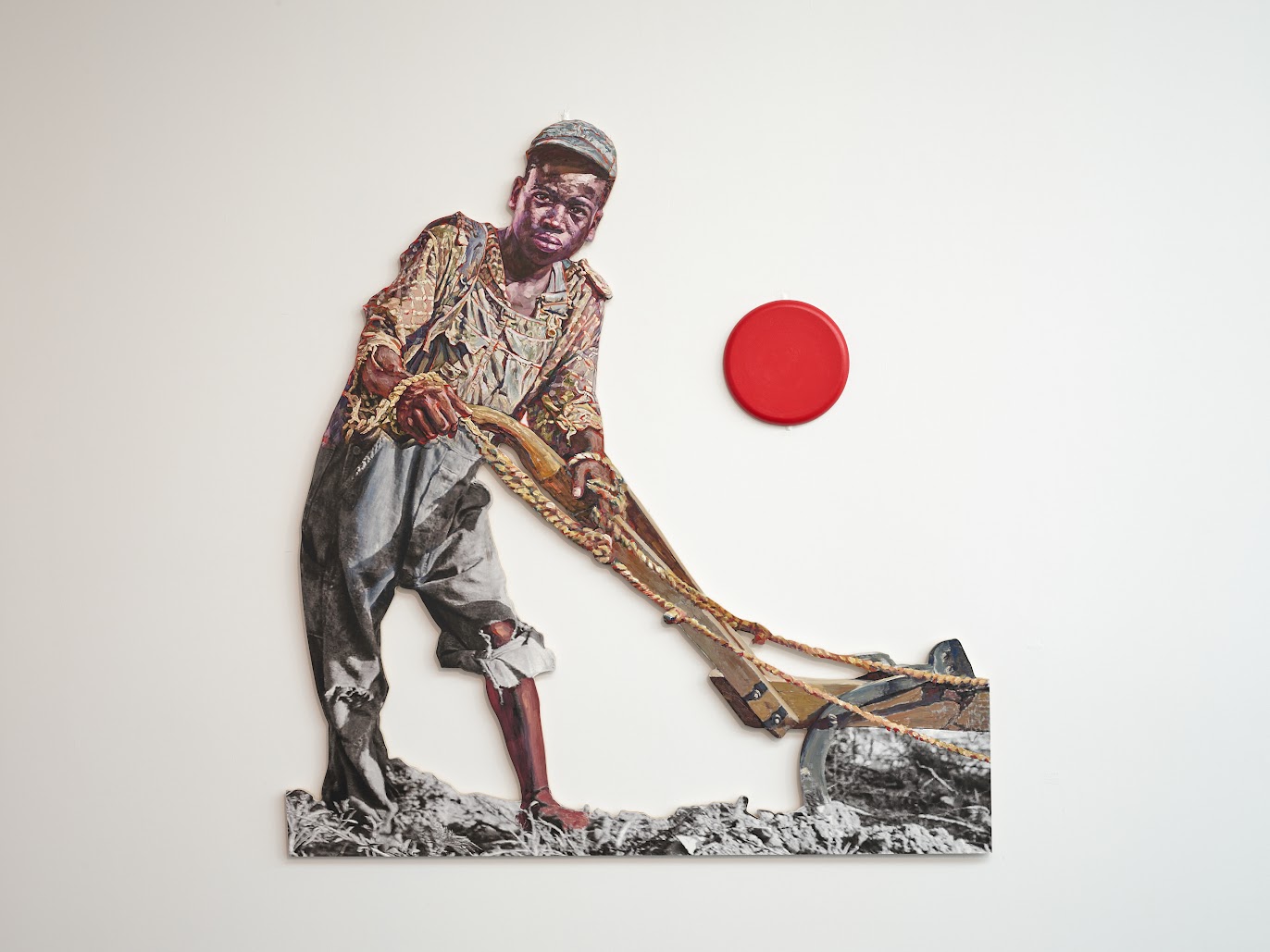
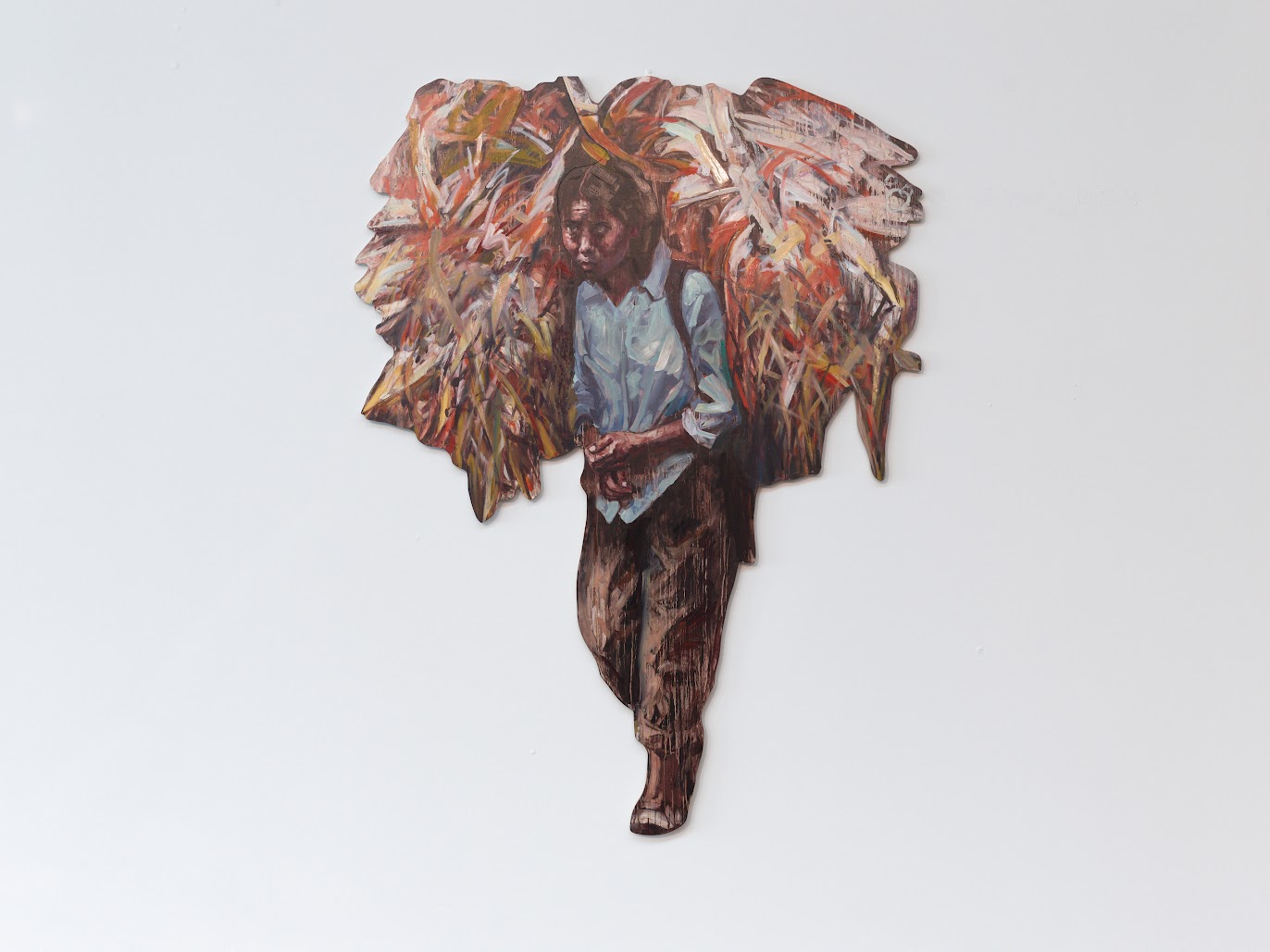
Hung Liu’s art, from small to huge canvases, crowns her dynamism as a woman of power and strength. Liu’s art explodes and implodes; they are fireworks bursting against a night sky.
“Finding old photographs made me very excited,” Liu says, many of which have inspired this brave soul to gift our world with her vibrant eye, her working fingers, her deep breaths of how art illuminates history which to her is a verb, not a noun.
Art, history and memory. Many of Liu’s paintings emanate from black-and-white photographs. The colors come from memory, guided by her all-seeing eye. This is a woman who breathes history, utilizing drips and washes, not as camouflage but as rain or tears inviting you to ponder, to think.’
“A world without ghosts,” Hung Liu tells us, “is like a person without a shadow, an idealized yet impossible fantasy. The ghosts symbolize our rich, complicated, most times rather painful history and memory. Only after embracing the ghosts inside and outside us, we then have a better understanding of ourselves, our time, and our mission.” Embracing the art of Hung Liu is to act, for she summons the ghosts for us.
— from Summoning Ghosts – The Art of Painter Hung Liu by NELLIE WONG, Oct. 2016
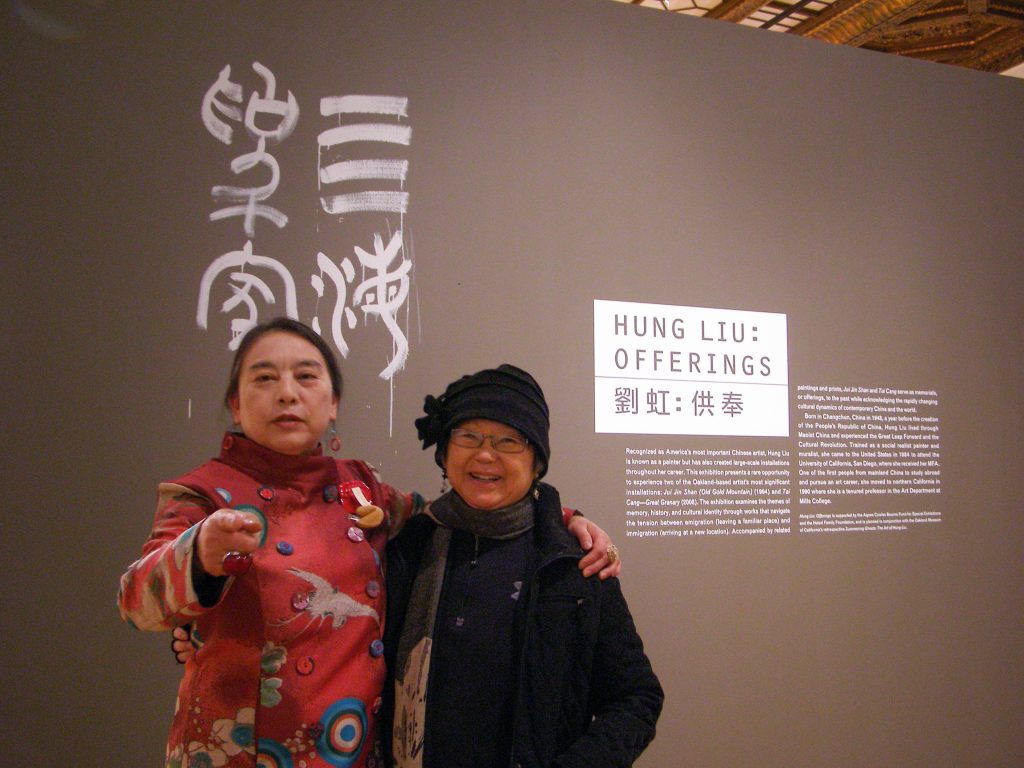
I first met Hung Mei Mei* in the late 1990s when she (and her husband, Jeff Kelley) moved from Texas to Oakland. She was taking a teaching position in the art department of Mills College. At that time, I was working on a Festival 2000** project so I invited her to present an award at a ceremony organized by the defunct Asian Heritage Council. That evening was the first time that I met her. Little did I know that Hung Mei Mei’s arrival in the San Francisco/Oakland Bay Area would introduce me and others to her magnificence as an American artist born in China.
In Oakland, at the intersection of 51st and Shattuck, there is a just-completed mural titled Love Letter to Oakland 2*** painted on the PG&E building honoring local older generation creators of art and culture. There, on that mural, is an imposing image of Hung Mei Mei whose left hand rises diagonally towards the brilliant radiance of the sun. Her right hand, clutching paint brushes, reaches downward in front of the Paramount Theater’s light. Dandelions on her dress represent her inner beauty. Her perceptive eyes, full of compassion, gazes upward. Taking my time to slowly scrutinize the mural, I thought of Hung Mei Mei as a jewel in the lotus.
What is a lotus? It is an aquatic perennial rooted in the soil of a river or pond. On the surface of the water leaves float. A stain-free lotus, pushes through mud filled with nutrition, as it interfaces with the sun. Symbolizing strength, resilience, and rebirth, the lotus returns to the mud every night. The next day the lotus would re-emerge on its path towards the sun.
Hung Mei Mei‘s prolific artworks (treasured by the world) is like the continuing life cycle of a lotus. Her paintings shine brilliantly with colors and shapes. Her icon of circles proliferate. Drips of linseed oil wiggles downward, creating squiggly lines that bring life to memories of the human condition she had witnessed and studied in China and beyond. She iterated her heart-felt emotions about oppressed women and unseen children visually.
Throughout our years of friendship, my husband and I were blessed by the presence of this breathtaking artist and her husband, Jeff. When we saw one another every so often we laughed together. We shared dinners. We talked about family, our children. We treasured one another. In later years, I embraced her at the opening reception of her many exhibits, In August of 2021, she passed. This spring, I planted a red Chinese lantern shrub in my front yard to honor her and two other beautiful women who passed, my beloved sister Lai Webster and the dynamic Moira Roth. They, like Hung Mei Mei, reside in my heart. May Hung Mei Mei’s awakening spirit continue to bless me. May her awe-inspiring spirit continue to bless you.
FLO OY WONG, June 27-29, 2022
* Mei Mei is Mandarin for little sister.
** Festival 2000 was a San Francisco multicultural arts festival.
*** David Burke, Pancho Pescador, and Joevic Yeban painted the mural.
